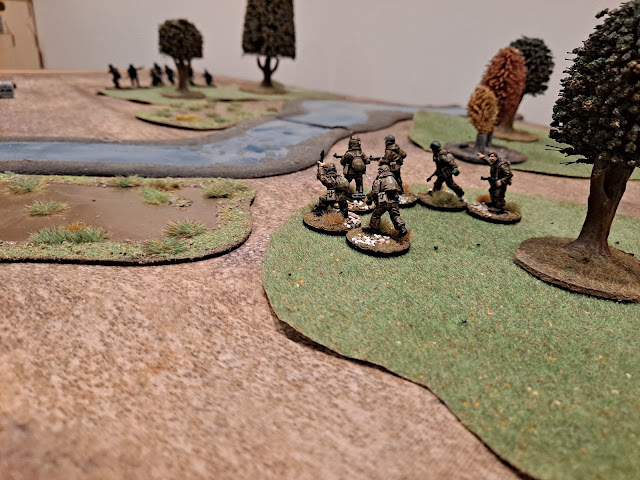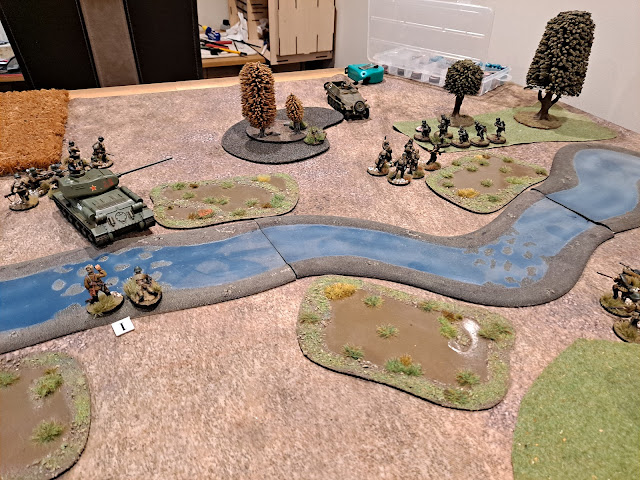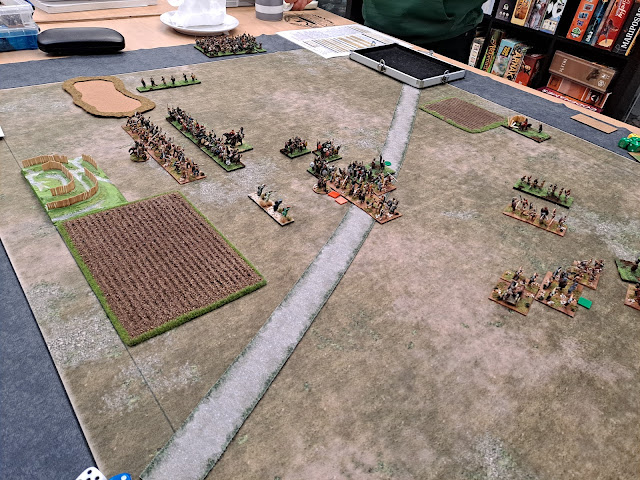The Battles of the Frontier – Vosges Aug 1914
Introduction
As a distraction from our current 1809 Campaign I invited Matthew to play a WW1 game using the “Before the leaves fall” derivative of Age of Eagles.
The game scenario is taken from Karl Deuringer’s history of the Bavarian Army in 1914 “The First Battle of the First World War – Alsace Lorraine” translated by Terence Zuber. There are a range of excellent potential scenarios in this book. The one I chose was loosely based on the covering force actions in August 1914 in the Vosges, for reference it is on page 67 of the book.
It is interesting because of the ad-hoc organisation of the German forces and the 30 (Res) division. The scenario is loosely based on the action because of the sparsity of information of the French actions. I did manage to cover some good information, but not greatly detailed, in the resources Bill Gray has made available on the Age of Eagles site.
German Briefing
The 7th Army is continuing to defend Alsace-Lorraine. Its mission is to tie down French forces to prevent them redeploying to confront the German right wing sweeping through Belgium. The majority of 7th Army concentration is further to the north around Strasbourg and providing the link to 6th army around Nancy.
In order to protect the vulnerable Rhine Valley a number of Ersatz Brigades and Landwehr formations have been hastily assembled to defend the Vosges frontier. Additionally, a new reserve Division, 3oth Reserve Division has been formed south of Strasbourg to command the area between Strasbourg and Colmar.
Contact so far has been light against enemy forward patrols. However, reports are that the French have crossed the Col de Saale and are advancing NE down the Bruche Valley towards Strasbourg. Other forces are advancing down the other valleys to the Rhine flood plain to threaten Strasbourg from the south.
30 (Res) Division mission is to seize Ville and Triembach to protect the Armies flank, destroying enemy within the zone.
German scenario specific rules
- All Infantry Regiments or the Ersatz Bde are 8 figs (8/5/3, 8/6/4, or 8/7/5 a dice roll when the unit takes a casualty to determine which of the three factors is used)
- Landwehr is militia, all the rest of the German troops are Regular
- Res Infantry Regt MG Coys can be integrated or separate
- There is no Corps Commander.
- Command radius of Brigade commanders is reduced to 6”
- Div Arty is under the command of the Divisional Commander
- 2 Landwehr Brigade comes under command of 30 (Res) Divisional Commander only once it has come into his command distance.
- All on table troops less those deployed within 3” of named places must be deployed within 6” of the E table edge.
French Briefing
The Army is continuing its advance into Alsace-Lorraine. In the southern sector the main effort is 21eme Corps advance North East against Strasbourg. At the same time 7eme and 14eme Corps penetrate the Vosges mountains, seize the passes and protect the Armies flank.
Contact so far has been light against enemy patrols and rearguards. However, reports are that the Germans have assembled a reserve division and various Landwehr and secondary troops to protect the Rhine Valley.14eme Corps Mission is to seize the passes at St Marie, Urbeis, Saales and Charbonniere. Once these have been secured the Corps is to advance down the valleys to threaten the Rhine Valley. 140eme Regt is to advance to the area of Selestat and to destroy railway line and infrastructure running North to Strasbourg. (The yellow square is the battlefield).
French scenario specific rules
- All Infantry Regiments are 8 figs (8/6/4 or 8/7/5 a dice roll when the unit takes a casualty to determine which of the two factors are used) all are Regular
- All CA (Chasseurs Alpin) Battalions are 4 figs (4/3/2) and are Elite
- All artillery Groups are 2 artillery bases
- All MGs are integrated in the Battalions
- There are no Divisional or Corps Commanders.
- Command radius of Brigade commanders is reduced to 6”.
- 28eme Divisional Artillery can only be placed by either of its Brigade commanders
- 27eme Divisional artillery can only be placed by 53eme Brigade commander.
Game Map and the Terrain
The battlefield looking from the SE as seen by an aerial observer on the morning of the 18th August 1914.
- The dotted line is a track. Infantry and Artillery Columns move at normal speed along tracks.
- All infantry lose 3” movement when going up a level on a hill in woods.
- Artillery are not allowed to go up a level of a hill in woods.
- Artillery can prolong in woods, but they cannot do anything else that turn.
The Battle
The battle started at 1200hrs with the fire fight between 27IR in Triembach and the 50eme IR in Ville. The French rapidly gain fire supremacy over the Germans. Meanwhile the German artillery is about to come forward and deploy.
The 78eme IR in Chateau du Frankenbourg supported by their 75mm guns engaged the German troops in Thann.
27IR were driven out of Triembach by the fire and the artillery sent forward to support them was damaged by the French infantry fire.
At around 1430 the German 10th(Res) Brigade commander decided that he needed to take firm action and directed the 66IR to advance and attack the French troops on the high ground of Chateau du Frankenbourg.
Over the next hour the 78eme IR fell back repeatedly and abandoned their position on the high ground. The removal of this threat to the German flank meant that the 10th (Res) Brigade Commander could redeploy the 66IR to support the 27IR in order to respond to the reports of new French troops arriving from the north.
Although the 50eme IR felt sufficiently emboldened to advance now that their reinforcements had arrived, these very same reinforcements were delayed and harassed by very effective long range German artillery fire.
By 1600hrs the French had managed to seize Neuve Eglise, and reoccupied Ville. However, for both sides the cumulative losses were having significant impact on the willingness of the troops on both sides to advance. By 1630hrs both sides were retiring to lick their wounds to regroup.
OutcomeBoth Matthew and I called this one as a marginal tactical French victory in that although the French were not able to advance to destroy the railway line, they were able to force the Germans out of the Vosges and back into the Rhine Valley and to retain the battlefield. For the Germans the losses they suffered in stalling the French were also significant and could have had operational impact on 6th and 7th Army future operations.


























































